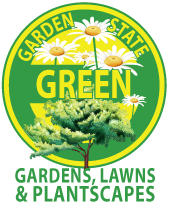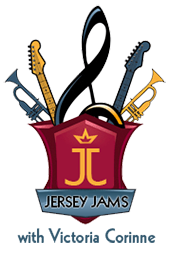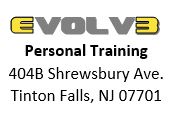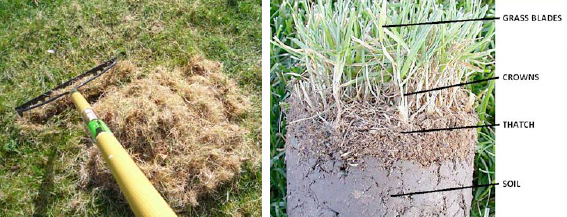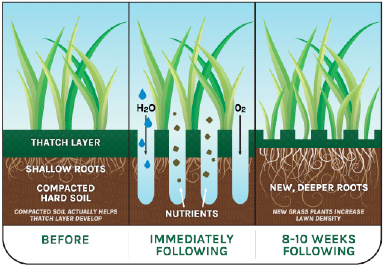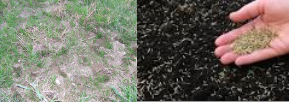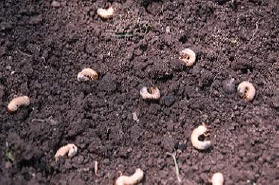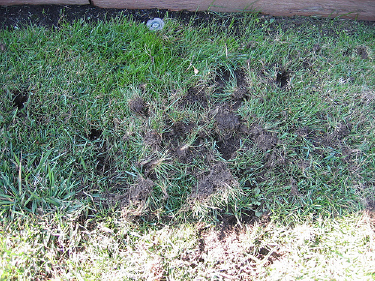Dear fellow gardeners, I hope that you find these tips helpful for your activities this October.
1) De-thatch: Yes, a good de-thatching of your lawn can really help out in several ways. After a whole season of activity, to de-thatch your lawn is a very worthwhile treatment.
This will remove dead grass, stolon, and debris at the soil surface. This will also facilitate a more effective aeration, and allow seed, fertilizer, and lime to activate more readily. The thatch layer acts as a miniature compost layer above the soil, which can “eat up” and prevent nutrients and treatments from reaching the soil surface.
A de-thatch can be done by hand with a spring rake, flat back (grading) rake, or mechanically with a machine from your local rental center.
2) Core Aerate: Aeration can help out your compacted soil from wear, and machinery, hardpan, or clay soils, and core aeration is the best way to remedy that.
3) Seeding: After de-thatching, I top-dress, re-seed, and over-seed. After the de-thatching process, bare spots can be top-dressed with good organic topsoil, and re-seeded.
Over-seeding is applying seed over an established lawn, as to thicken sparse areas, and enhance overall growth. Remember to select the correct seed for sun or shade, and I also stay away from Bluegrass seeds at this point in the season, as they can take too long to establish. I like to cover the seed with straw hay in larger areas, to help speed germination. Another germination product good for smaller spaces is Penn Mulch. Water gently , twice daily, morning and afternoon, until you see the seedling results, (“whiskers”) and remember to watch the weather for rain to assist you.
4) Watering: We also have to keep an eye on the weather reports, and to keep watering!
A recent announcement by The Weather Channel has a projection of a warmer than usual October for us here in the Northeast, and I have seen grub damage from observations this week. If you see nuzzling (1” circles of bare soil) in your lawn, check for Grubs, and head directly to your local garden shop for a fast remedy. A test of Grub activity is also to tug on the turfgrass, and see if it pulls up, and detaches from the soil.
Written By: Everett Fink
Edited By: Elysse Fink
 Everett Fink is a Certified Rutgers Master Gardener, Certified Pesticide applicator, and N.J. State licensed Home Improvement Contractor. Everett was designated Top Tier Designer at Sponzilli Landscape, and currently Owns Property Details LLC, in New Jersey. Property Details has a Container Gardening Division designing and maintaining Pools, Patios, and Porches with beautiful flowers, and foliage.
Everett Fink is a Certified Rutgers Master Gardener, Certified Pesticide applicator, and N.J. State licensed Home Improvement Contractor. Everett was designated Top Tier Designer at Sponzilli Landscape, and currently Owns Property Details LLC, in New Jersey. Property Details has a Container Gardening Division designing and maintaining Pools, Patios, and Porches with beautiful flowers, and foliage.

















